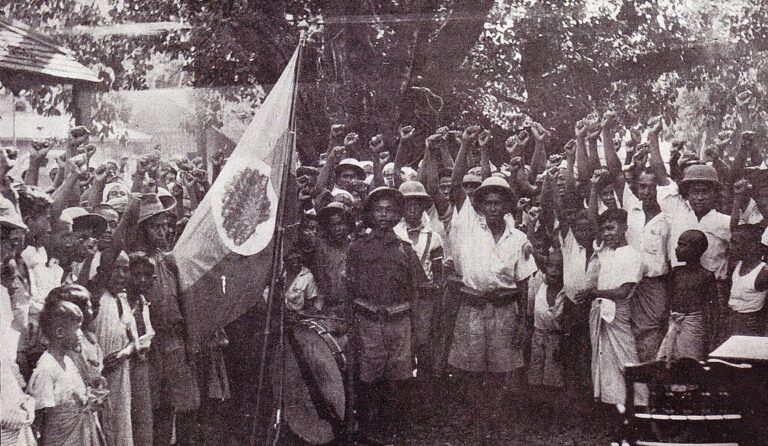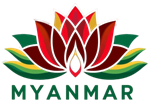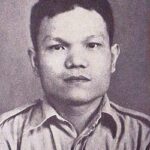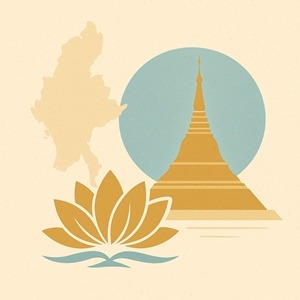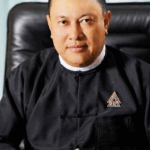The Thirty Comrades
Introduction
The Thirty Comrades were a group of young Burmese nationalists who founded the modern Burmese Army (Tatmadaw) in 1941, during the Second World War. Their legacy is deeply intertwined with Myanmar’s struggle for independence. While their original mission was to liberate the country from British colonial rule, the Thirty Comrades later became a symbol of both patriotism and the military’s lasting political role in Myanmar’s history.
Origins and Formation
In the late 1930s, Burmese nationalist movements intensified as young activists sought a path to independence. Among them was Aung San, a key student leader who would later become the father of modern Myanmar. Together with other activists, he traveled to seek support from foreign powers willing to aid in Burma’s liberation.
In 1940, Aung San and his group reached Japan, which was preparing for its expansion into Southeast Asia. The Japanese Imperial Army agreed to provide training and arms to Burmese nationalists in exchange for their cooperation in the war against Britain. This led to the formation of a cadre of thirty young men who would become known as the Thirty Comrades.
Training in Hainan
The group was sent to Hainan Island, then under Japanese control, where they received military training under Japanese instructors. Their training included infantry tactics, guerrilla warfare, and modern military organization. During this period, they also forged a close bond and swore loyalty to one another as comrades-in-arms.
It was here that the foundation of the modern Burmese Army was laid — a professional fighting force built not from colonial structures but from nationalist ideals.
Return to Burma and World War II
In 1941, the Thirty Comrades returned to Burma alongside the Japanese invasion forces. They formed the core leadership of the newly established Burma Independence Army (BIA). Initially, many Burmese people welcomed the Japanese and the BIA as liberators from British rule.
However, disillusionment quickly followed as Japanese occupation proved harsh and exploitative. By 1945, many of the Thirty Comrades, led by Aung San, switched allegiance to the Allied side, forming the Anti-Fascist People’s Freedom League (AFPFL) and turning against Japan. This shift played a decisive role in expelling the Japanese and paving the way for Burma’s independence in 1948.
Key Figures Among the Thirty Comrades
Aung San – Leader of the group, later became the architect of independence. Assassinated in 1947.
Ne Win – Later became Commander-in-Chief of the Burmese Army and Prime Minister after leading the 1962 coup.
Bo Let Ya, Bo Zeya, Bo Ye Htut, Bo Yan Naing, and others – Many played prominent roles in both the military and post-independence politics.
Legacy
The Thirty Comrades hold a complex place in Myanmar’s history:
Patriots: They are remembered as freedom fighters who risked their lives to end colonial rule.
Military Founders: They established the Tatmadaw, which continues to dominate Myanmar’s political landscape.
Controversial Role: While some, like Aung San, envisioned democracy and civilian leadership, others like Ne Win steered the country toward decades of authoritarian military rule.
Their oath of loyalty and shared vision of independence remains a cornerstone of Myanmar’s nationalist history, though their legacy is debated today given the Tatmadaw’s long involvement in politics.
Conclusion
The Thirty Comrades were not merely soldiers; they were revolutionaries who helped forge the path to Burma’s independence. Their actions laid the foundation of the modern nation-state, but also set the stage for the army’s enduring role in politics. The story of the Thirty Comrades is both an inspiration of sacrifice for independence and a cautionary tale of the complex legacy of military power in Myanmar.
| No. | Nom de guerre | Real name |
|---|
| 2 | Thakin Tun Oke | Thakin Tun Oke |
| 4 | Bo Set Kya | Thakin Aung Than |
| 6 | Bo Ne Win | Thakin Shu Maung |
| 7 | Bo Yan Naing | Ko Tun Shein |
| 8 | Bo La Yaung | Thakin Ba Gyan |
| 9 | Bo Hmu Aung | Thakin San Hlaing |
| 10 | Bo Yan Aung | Thakin Hla Myaing |
| 12 | Bo Min Gaung | Thakin Saw Lwin |
| 13 | Bo Mya Din | Thakin Than Tin |
| 15 | Bo Ye Htut | Ko Aung Thein |
| 16 | Bo Lin Yone | Thakin Tun Shwe |
| 17 | Bo Hpone Myint | Thakin Tin Aye |
| 18 | Bo Myint Aung | Thakin Soe |
| 19 | Bo Tauk Htain | Thakin San Mya |
| 20 | Bo Ta-ya | Thakin Khin Maung Oo |
| 21 | Bo Zin Yaw | Ko Than Nyunt |
| 25 | Bo Myint Swe | Thakin Tun Khin |
| 27 | Bo Saw Naung | Thakin Thit |
| 28 | Bo Moe Nyo | Thakin Kyaw Sein |
| 29 | Bo Than Tin | Thakin Than Tin |
